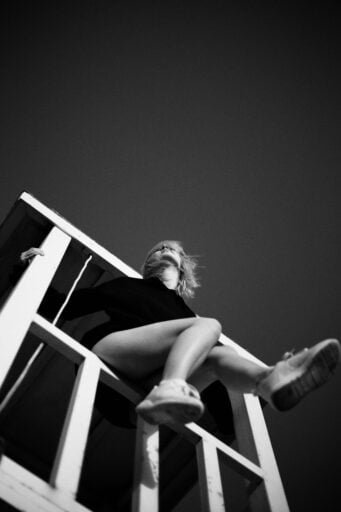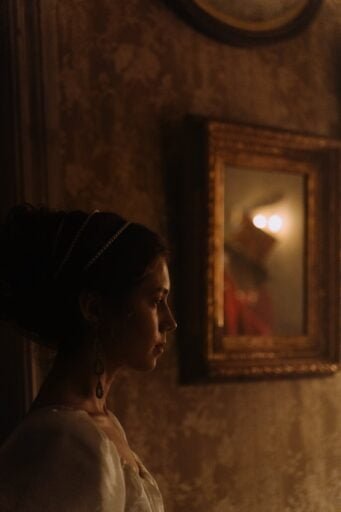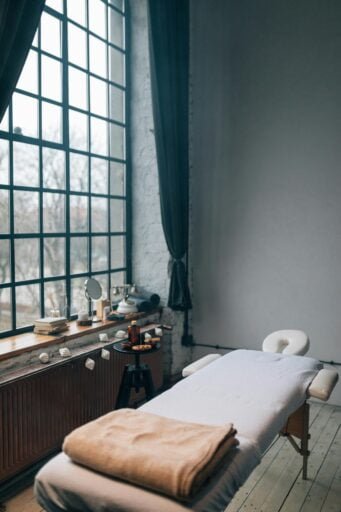During moments of depression, where everything feels dark and heavy, finding solace in art can be a powerful and transformative experience. However, the journey of rediscovering your artistic passions after battling with depression can be daunting. This article aims to provide empathic guidance on how to gently ease yourself back into the world of art and creativity, offering practical tips and encouragement to help you rebuild your artistic identity and find joy in self-expression once again.
Understanding the Connection Between Art and Mental Health
Art has long been recognized for its therapeutic benefits in promoting mental health and well-being. Engaging in artistic activities can provide an outlet for self-expression, a means of processing emotions, and a way to find solace during difficult times. Whether it is painting, drawing, writing, or any other form of art, the act of creating can be a powerful tool in healing and recovering from depression.
The Therapeutic Benefits of Art
Art has a unique way of allowing individuals to express themselves when words fail. When you engage in art, you have the freedom to explore and communicate your thoughts, emotions, and experiences visually. This process can be both cathartic and empowering, as it enables you to release pent-up feelings and gain a better understanding of yourself.
Moreover, creating art stimulates the release of dopamine, a neurotransmitter associated with pleasure and reward. This can help alleviate symptoms of depression, such as low mood and motivation, by providing a natural boost of positive emotions. Through art, you can find moments of joy, satisfaction, and fulfillment.

How Depression Can Impact One’s Artistic Practice
Depression can have a significant impact on one’s artistic abilities and motivation to create. It often brings feelings of apathy, low energy, and self-doubt, which can make it challenging to engage in any form of creative pursuit. The symptoms of depression may lead to a decline in artistic productivity or cause a lack of interest in hobbies that were once enjoyable.
Moreover, depression can bring about changes in cognition, making concentration and focus more difficult. This can affect your capacity to generate ideas, think creatively, and execute artistic projects. The negative thoughts and self-criticism that often accompany depression can further hinder your artistic practice, leading to a cycle of self-doubt and discouragement.
The Importance of Pursuing Art as a Form of Self-Expression During Depression
While it may feel overwhelming to engage in art during a depressive episode, it is essential to remember the value of self-expression as a means of healing. Art offers a safe and non-judgmental space to explore your emotions, express your struggles, and redefine your narrative. Through creating art, you can reclaim a sense of agency and control over your thoughts and experiences.
Art can also serve as a form of escapism, providing a temporary reprieve from the weight of depression. It allows you to immerse yourself in the present moment, where worries and anxieties are momentarily set aside. This shift in focus can provide much-needed relief and contribute to an overall improvement in mental well-being.

Recognizing and Accepting the Impact of Depression on Artistic Abilities
Acknowledging the changes and limitations caused by depression is an important step in rebuilding your artistic practice. It is essential to be compassionate and understanding towards yourself during this time. Recognize that depression is not a reflection of your artistic talents or abilities; it is a temporary obstacle that can be overcome with time and support.
Understanding that artistic skills can be regained over time is crucial. While depression may temporarily impact your creativity and technical abilities, it does not erase them entirely. Focus on the process of re-engaging with art rather than the outcome. Embrace the opportunity for growth and experimentation, even if it means starting slowly and with smaller projects.
During the recovery process, it is important to be kind and patient with yourself. Celebrate even the smallest victories and acknowledge the effort you are putting into your art, no matter how big or small. Remember that progress is not always linear, and setbacks are a natural part of the journey. Be gentle and forgiving of yourself, just as you would be towards a friend or loved one.
Finding Inspiration and Motivation
Exploring different art forms or mediums can help reignite your creativity and motivation. If you typically work with paints, try experimenting with photography, sculpting, or writing. Exploring new mediums can bring a sense of novelty and excitement, opening up new possibilities for self-expression and artistic growth.
Engaging with art in various ways can also spark creativity. Visiting art galleries, museums, or exhibitions can expose you to different styles, techniques, and perspectives, stimulating your own imagination. Reading books about art, studying the works of master artists, or watching documentaries can serve as valuable sources of inspiration.
Seeking inspiration from nature, emotions, or personal experiences can also fuel your artistic practice. Take walks in nature to observe its beauty, tap into your feelings, and reflect on your journey through depression. Translate these experiences into your art, allowing them to shape and give meaning to your creative expressions.

Creating a Supportive Artistic Environment
Setting up a dedicated art space at home can help create a supportive and nurturing environment for your artistic endeavors. Designate an area where you can keep your art supplies organized and readily available. Personalize your space with items that inspire you, such as photographs, meaningful quotes, or objects that hold sentimental value.
Joining art communities or groups can provide a sense of belonging and create opportunities for collaboration and feedback. Surrounding yourself with like-minded individuals who share your passion for art can foster motivation and provide a supportive network. Participating in workshops, art classes, or online platforms can further expand your artistic horizons and connect you with fellow artists.
Seeking encouragement and feedback from loved ones can also be invaluable. Share your work with trusted friends and family who can offer constructive criticism, support, and praise. Their validation can boost your confidence and provide the emotional support needed to continue your artistic journey.
Establishing Realistic Goals and Expectations
When getting back into art after depression, it is crucial to set realistic goals and manage expectations. Start with small, achievable art projects that are within your current abilities and energy levels. Breaking down larger creative endeavors into smaller, manageable tasks can prevent feelings of overwhelm and increase your sense of accomplishment.
Avoid falling into the trap of perfectionism. Accept that imperfections are a natural part of the artistic process and embrace them as opportunities for growth. Focus on the progress you make rather than fixating on the final outcome. Celebrate each step forward, no matter how small, as it signifies your dedication and resilience.
Remember that art is subjective, and everyone’s artistic journey is unique. Do not compare yourself to others or measure your progress solely based on external markers of success. Instead, find fulfillment in the personal growth, self-expression, and joy that art brings to your life.
Developing a Consistent Art Practice
To truly reignite your artistic practice, it is important to establish a consistent art schedule. Set aside dedicated time each day or week to engage in artistic activities. Treat this time as a commitment to your well-being and creativity. Consistency will help build momentum, deepen your skills, and develop a sense of routine.
Experiment with different techniques and styles to keep your art practice fresh and engaging. Trying new approaches can stimulate your creativity, challenge you to think differently, and expand your artistic repertoire. Embrace the process of continuous learning and growth, as it will contribute to your artistic development and sense of fulfillment.
Use art as a form of self-care and self-expression. Allow yourself to immerse in the creative process, letting go of any expectations or pressures. Let art become a sanctuary where you can find solace, process emotions, and explore your inner world. Whether it is through painting, writing, or any other form of art, use this time as a means of self-reflection and personal growth.
Overcoming Creative Blocks
Creative blocks are a common challenge faced by artists, especially during or after experiencing depression. Fortunately, there are various strategies that can help overcome these mental blocks and reignite your creativity.
Explore different strategies to overcome mental blocks, such as setting deadlines, creating art challenges, or breaking the project down into smaller, manageable tasks. Sometimes, simply shifting your environment or stepping away from the project temporarily can provide a fresh perspective and renewed inspiration.
Try new art exercises or prompts to jumpstart your creativity. Practices like free writing, doodling, or collaging can help loosen up your artistic muscles and encourage experimentation. Embrace the idea of playfulness and allow yourself to create without any pressure or judgment.
Seek inspiration from other artists or art books. Surround yourself with works of art that resonate with you and study the techniques and styles employed. Engaging with the artwork of others can spark new ideas and perspectives, helping you break through creative blocks and find new directions for your own art.
Seeking Professional Help if Needed
Recognizing the signs when professional help may be necessary is vital for comprehensive healing. If depression persists or significantly impacts your daily life and ability to engage in art, it may be beneficial to consult a therapist or counselor who specializes in art therapy.
Art therapy combines the healing power of art with the guidance and expertise of a trained therapist. It provides a safe space to explore and process emotions, gain insights, and develop coping strategies. A professional art therapist can help you navigate the complexities of depression and offer tailored interventions to support your artistic and mental health journey.
Combining artistic practice with therapy can be a powerful tool for healing and growth. The integration of both approaches creates a comprehensive framework that addresses both the emotional and creative aspects of your well-being. Professional support can provide validation, guidance, and a structured approach to your artistic recovery.
Taking Breaks and Practicing Self-Care
Prioritizing self-care routines and activities is essential when re-engaging with art after depression. Taking regular breaks, resting when needed, and engaging in activities that restore your energy are vital for maintaining your overall well-being. Self-care allows you to recharge, replenish your creative reserves, and prevent burnout.
Recognize that artistic productivity does not solely define your worth or value as an individual. Your mental well-being should always take precedence over your artistic pursuits. Be attuned to your own needs and feelings, and give yourself permission to step away from art when it becomes overwhelming or tiring.
Finding the right balance between art and restorative activities is crucial. Engage in activities that bring joy, relaxation, and fulfillment outside of your artistic practice. This can include activities such as taking walks in nature, practicing mindfulness or meditation, spending time with loved ones, or pursuing hobbies unrelated to art. Nurturing yourself holistically will support your artistic journey and overall mental well-being.
Continuing to Create Art as a Form of Maintenance
Incorporating art into your daily or weekly routines is key to maintaining your artistic practice and promoting ongoing mental well-being. Just as physical exercise helps maintain physical health, consistent engagement in art can contribute to your emotional and psychological well-being.
Recognize art as an ongoing journey of self-discovery. Continuously explore new techniques, experiment with different styles, and challenge yourself to push beyond your creative boundaries. Embrace the imperfections, setbacks, and successes along the way, knowing that each contributes to your growth as an artist and individual.
Use art as a tool for managing emotions and well-being. When faced with difficult emotions or stressful situations, turn to art as a means of expression and processing. Allow your creativity to serve as a vehicle for self-reflection, healing, and empowerment. Trust in the transformative power of art to bring comfort, joy, and resilience into your life.
In conclusion, getting back into art after depression is a journey that requires understanding, compassion, and self-care. Embrace the therapeutic benefits of art, acknowledge and accept the impact of depression on your artistic abilities, and find inspiration and motivation through exploring different art forms and engaging with art in various ways. Create a supportive artistic environment, establish realistic goals and expectations, and develop a consistent art practice. Overcome creative blocks, seek professional help if needed, and remember to take breaks and prioritize self-care. Continually create art as a form of maintenance, recognizing its ongoing role in your journey of self-discovery and well-being.